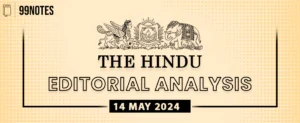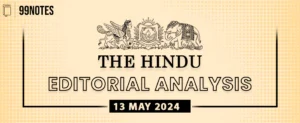Topic: GS1 – Indian Society – Urbanization, their problems and their remedies, GS2 – Social Justice – Vulnerable Sections Understanding Ambedkar’s views on urbanisation and caste is crucial for comprehending social dynamics in contemporary India – Relevant for UPSC preparation. |
| Context |
● The article discusses B.R. Ambedkar’s perspective on urbanisation and caste in Indian cities, highlighting his rejection of village life, belief in urban liberation for Dalits. ● The article addresses the persistent challenges of caste-based discrimination in urban areas. |
Ambedkar’s Perspective on Urbanization and Caste:
- Rejecting Village Life: Ambedkar encouraged Dalits to move to cities, rejecting the idealisation of Indian village life due to its entrenchment in the caste system.
- Opportunity for Liberation: He believed urbanisation provided an opportunity for Dalit liberation by weakening caste-based oppression prevalent in villages.
- Anonymity in Cities: Cities offered anonymity, enabling individuals to escape caste-based discrimination and transition to a class-based order.
- Acknowledgment of Challenges: Ambedkar recognized the persistence of caste-based discrimination in urban areas, as seen in his struggles to find housing in Baroda.
Caste and Spatiality in Indian Cities:
- Language of ‘Purity-Pollution’: Caste manifests in urban spatiality through concepts of ‘purity-pollution,’ influencing housing choices and public policies.
- Segregation and Discrimination: Dalits and Muslims face severe segregation and discrimination in housing, access to public services, and environmental quality.
- State Sanctioned Discrimination: Governments impose Brahminical regulations, restricting meat sales and reinforcing caste-based segregation in public spaces.
Impact of Urban Governance Policies:
- Housing Crises and Segregation: Urban governance policies perpetuate caste-based segregation, impacting housing access and public service provision.
- Forced Evictions: Dalits and Muslims are disproportionately affected by forced evictions, exacerbating housing insecurity and marginalization.
- Failure of Indian Cities: Despite Ambedkar’s hopes, Indian cities have failed to fulfill the promise of urbanization, leaving Dalits marginalized and entrenched in ghettos.
Conclusion:
- Persistent Caste Oppression: Despite urbanization, caste-based discrimination persists in Indian cities, highlighting the failure of urban governance and the persistence of social hierarchies.
- Challenges for Dalit Liberation: Addressing caste-based segregation and discrimination requires comprehensive policy interventions and social transformations to fulfill Ambedkar’s vision of urban liberation.
| Discrimination Against Dalits in Indian Urban Centres: |
Forms of Discrimination Against Dalits in Indian Urban Centers: ● Social Exclusion: Dalits often face exclusion from social gatherings, religious places, and community events due to their caste identity. ●Occupational Discrimination: They encounter barriers in accessing employment opportunities, particularly in higher-paying jobs, and are often relegated to menial or low-wage work. ● Housing Segregation: Dalits are frequently forced to reside in segregated neighbourhoods or slums, facing discrimination in accessing housing in mainstream urban areas. ● Educational Marginalisation: Despite affirmative action policies, Dalit students encounter discrimination in schools and universities, including biased treatment from teachers and peers. ● Violence and Harassment: Dalits are subjected to physical violence, verbal abuse, and intimidation, perpetuating a climate of fear and insecurity. Way Forward: ●Legal Enforcement: Strengthen implementation of anti-discrimination laws, ensuring perpetrators are held accountable for caste-based violence and discrimination. ●Education and Awareness: Promote awareness campaigns to combat caste-based prejudices and stereotypes, fostering inclusive attitudes and empathy. ● Economic Empowerment: Facilitate access to skill development programs, entrepreneurship opportunities, and financial assistance to uplift Dalit communities economically. ● Housing Integration: Encourage policies promoting integrated housing and urban planning, eliminating segregation and ensuring equal access to housing. ● Affirmative Action: Enhance the effectiveness of reservation policies in education and employment, ensuring equitable representation and opportunities for Dalits. ● Community Engagement: Foster dialogue and collaboration between Dalit communities, civil society organisations, and government agencies to address systemic inequalities. ● Social Reforms: Promote inter-caste marriages, inter-community interactions, and cultural exchange programs to break down caste barriers and promote social cohesion. ● Political Representation: Increase Dalit representation in local governance bodies and decision-making processes to address their concerns and amplify their voices. |
| PYQ: Does urbanisation lead to more segregation and/or marginalisation of the poor in Indian metropolises? (250 words/15m) (UPSC CSE (M) GS-1 2023) |
| Practice Question: Discuss the manifestations of discrimination against Dalits in urban areas of India and suggest measures to address this social injustice. (150 Words /10 marks) |











